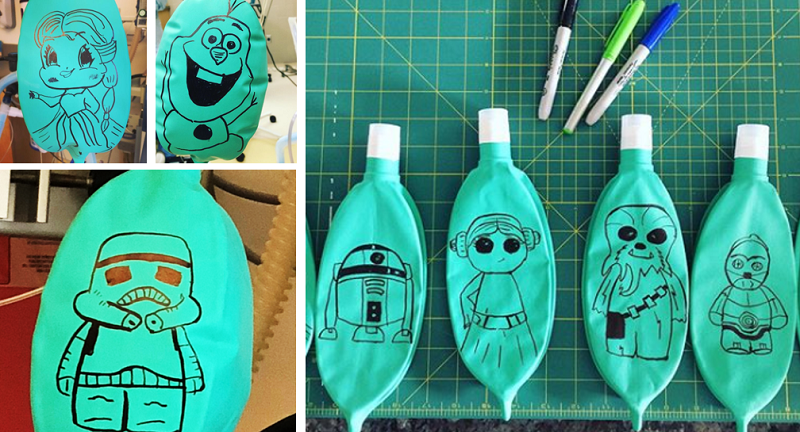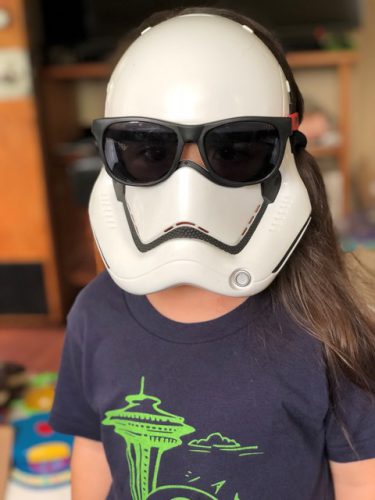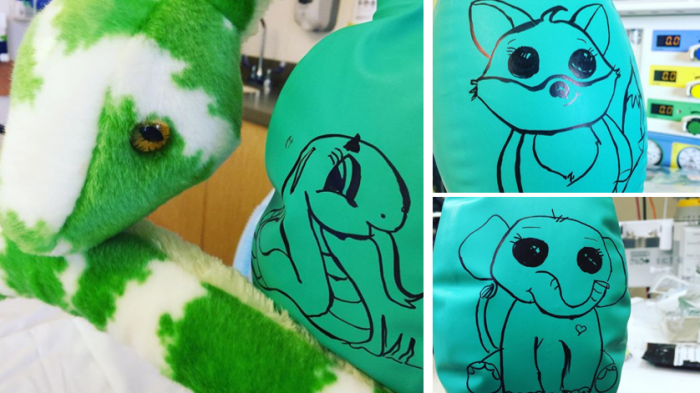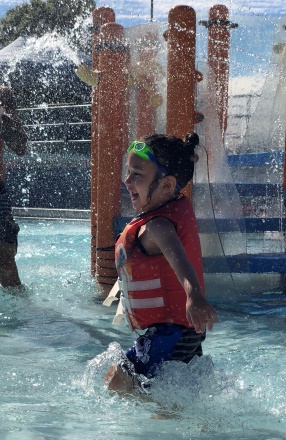 When 4-year-old Sho Hansen entered the doors of Seattle Children’s Bellevue Clinic and Surgery Center to get his tonsils removed, he clung on tightly to his mother.
When 4-year-old Sho Hansen entered the doors of Seattle Children’s Bellevue Clinic and Surgery Center to get his tonsils removed, he clung on tightly to his mother.
“After his name was called and we sat in the exam room, all he wanted to do was sit in my lap and not acknowledge anyone that came in to talk to us,” said his mother, Lisa Hansen. “Sho is shy and tends to get nervous around people he doesn’t know well.”
One of the staff members in line to help prepare Sho for his surgery was a nurse anesthetist named Anisa Manion.
“My role at the clinic is to administer anesthesia to patients to help them fall asleep before going into surgery,” said Manion. “We’re given a short period of time to get kids as comfortable as possible. The process can be very challenging — many kids are anxious and nervous, so the friendlier we make the environment for them, the easier it is for them.”
Manion has a special trick up her sleeve when it comes to calming kids down during the pre-surgery process.
“I try to draw fun characters on every one of my patient’s anesthesia bags,” said Manion. “Typically, once they see the drawing, their faces light up with joy.”
Adding artistry to anesthesia

Manion personalizes the bags by asking patients what their favorite cartoon character is. If they’re a bit on the shy side, she’ll find inspiration based on the shirt they’re wearing, what’s on their backpack, or from the doll or stuffed animal they bring with them to the clinic.
Sho had been sporting a Star Wars shirt the day of his surgery, which happened to also be one of his favorite movies.
“I remember Anisa asking Sho which Star Wars character was his favorite,” said Hansen. “I could tell that after she asked him, he started loosening up a bit. He ultimately picked a stormtrooper, which is his absolute favorite character from the movies.”
Manion sketched the stormtrooper onto the anesthesia bag while Sho enjoyably watched.
“You could tell that after seeing the finished drawing, he began to slowly come out of his shell,” said Hansen. “When she asked him if he liked it, he looked at her, smiled, and shook his head ‘yes.’”
Manion sees this type of reaction often after her patients first lay their eyes on their personalized bag.
“It really helps shift their mood,” said Manion. “It also assists in building rapport with the kids as we prepare them for surgery.”
A little creative comfort goes a long way

After Manion’s illustrated bag is ready for use, anesthetic gases are pumped through the bag and into a tube that connects to a face mask. The bag expands and contracts as the patient breathes in the gas, eventually putting them to sleep.
“I tell my patients to make the ‘balloon’ go up and down, or make it turn upside down,” said Manion. “For example, I once drew a patient an elephant and asked them to make the elephant ‘dance.’”
After two years of sketching characters on patients’ anesthesia bags, Manion’s repertoire of cartoons to continues to expand — whether it’s Star Wars to Frozen characters, or Pokémon to Paw Patrol — each one is just as special as the next and holds memories that Manion keeps close to her heart.

“I remember once there was a patient who was so scared and would not stop crying,” said Manion. “Then I spotted a little cartoon fox that was on the patient’s shirt and drew it on their bag. As soon as they saw it, all they wanted to do was play with the bag, which was so incredibly cute and heartwarming.”
Manion also makes sure each patient gets to take their special bag home with them as a souvenir.
“There was a patient who I drew Pikachu for,” said Manion. “As soon as they woke up from their surgery, the patient kept saying ‘balloon, balloon’ and motioned toward the drawing on the bag.”
As a parent watching her child go through the surgery process, Hansen is grateful to Manion and Seattle Children’s for the experience Sho was given at the clinic.
“I really appreciate how Seattle Children’s makes it about the kids,” said Hansen. “They try to make it as fun of an environment as it possibly can be. It’s those little touches they do — like Anisa’s drawings — that make you feel like they’re really looking out for your child.”
Resources:
- Seattle Children’s Bellevue Clinic and Surgery Center
- Pediatric General and Thoracic Surgery

